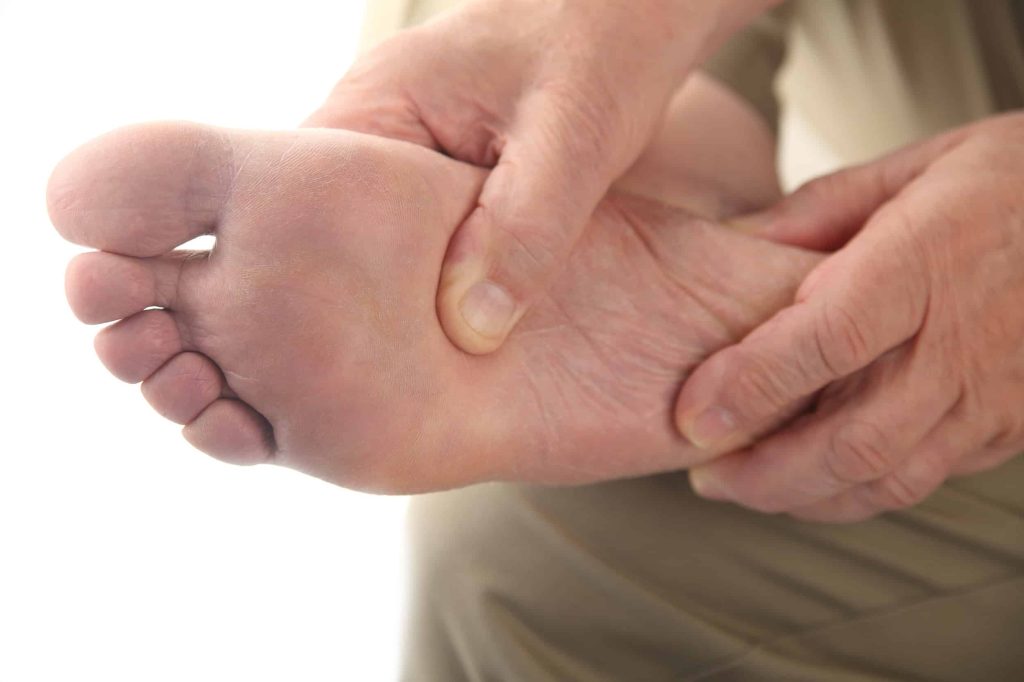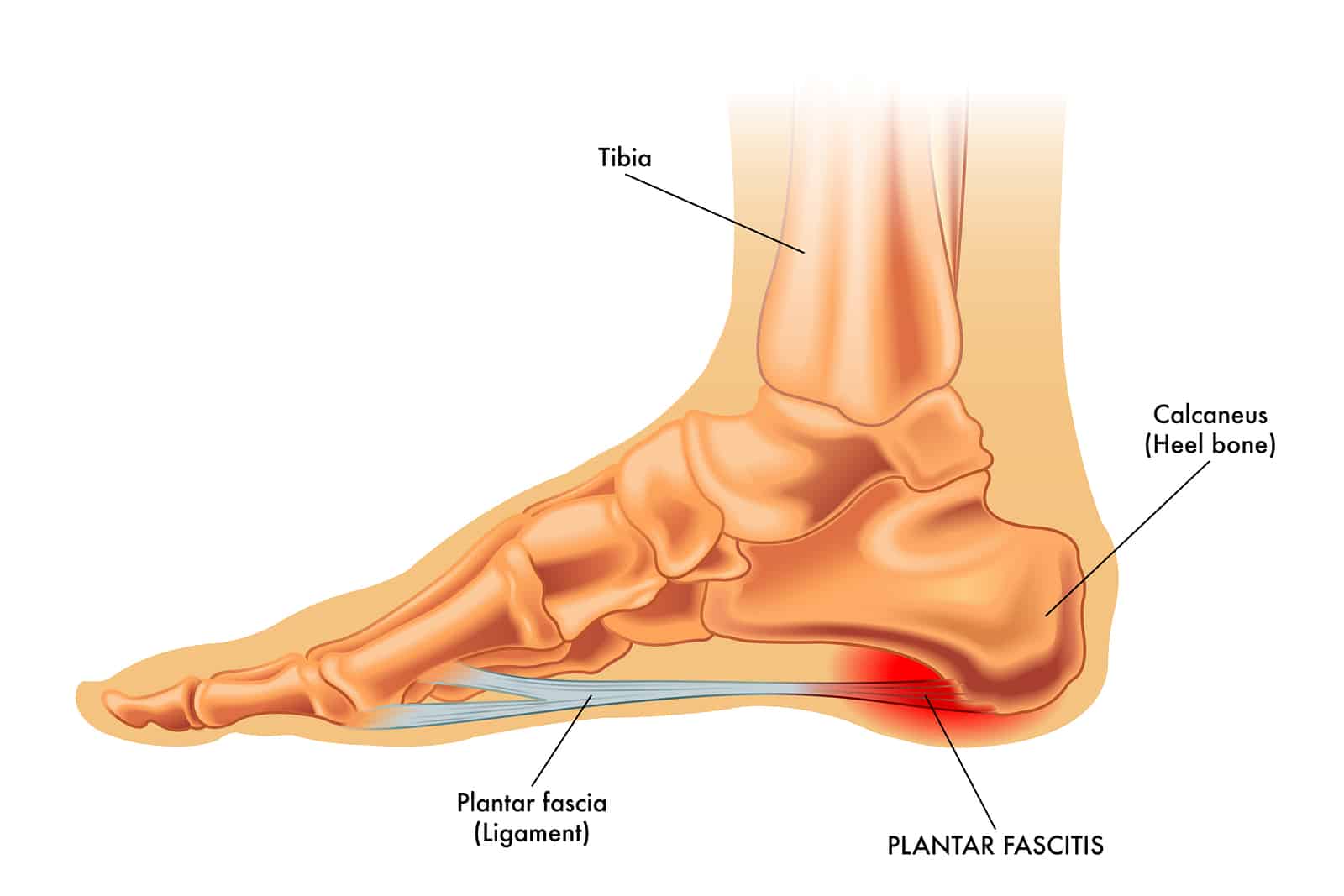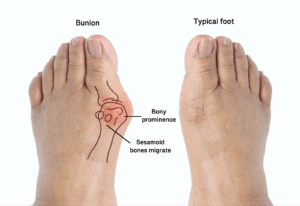A relatively common condition, plantar fasciitis is marked by heel pain. Typically, this pain is strongest after prolonged periods without placing weight on the feet, such as when you first wake in the morning. Although some patients require surgery to treat the condition, the vast majority – around 95 percent – can treat plantar fasciitis without surgery. Before we even consider a surgical solution, we usually recommend trying alternative plantar fasciitis treatments for at least six months. In this post, we discuss numerous non-surgical options to treat plantar fasciitis.
What Is Plantar Fasciitis?

Plantar fasciitis occurs when the thick band of tissue (called the plantar fascia) that runs along the bottom of your foot becomes inflamed. This band connects the heel bone and toes. When it becomes inflamed, you feel pain in the heel. The pain is strongest when you first stand and dissipates once you walk around a bit. It may return when you stand still for long periods of time.
The condition is common in runners, but it also strikes people who are obese or who wear shoes without adequate support.
Common Non-Surgical Plantar Fasciitis Treatments
As stated above, very few patients require surgery to treat their plantar fasciitis. Typically, we start treatment with one or more of the following:
- Rest: The first step is usually to decrease time spent on your feet for a week or two, particularly if you run or jog. This gives the plantar fascia time to heal.
- Stretching: Greater flexibility in the Achilles tendon, ankle, and calf muscles helps reduce stress on the plantar fascia.
- Wear more supportive footwear: Athletic shoes with adequate support and cushioning, particularly at the arch and heel, reduce strain to the plantar fascia. (Whoever posts this: Please link this to the recent post on buying the right shoes.)
- Shoe inserts: Heel cups and orthotics placed in the shoe support or cushion the heel, reducing strain on the plantar fascia.
- Taping: This offers extra support to the plantar fascia, which facilitates healing.
- Change your stride: If you run or jog, you may relieve the pressure on the plantar fascia by using a shorter stride and increasing speed.
- Lose weight: If you’re overweight, losing weight reduces strain throughout the musculoskeletal system, including the plantar fascia.
- Wear night splints: Although many people consider them difficult to sleep in, these plastic casts keep your ankle at a 90-degree angle so the plantar fascia stays in an extended position during rest.
- Apply ice: Cold helps relieve pain. You can use a cold pack or bag of ice, but you may also want to freeze a bottle of water. Rolling it under your foot helps stretch the plantar fascia while the cold relieves the pain.
Stretches to Relieve Plantar Fasciitis
There are a number of stretches you can perform at home to help relieve the pain of plantar fasciitis.
- Sitting on a chair, with your feet flat on the ground, place a tennis ball under the affected foot. Using slight pressure, keep the tennis ball under your arch while rolling it back and forth.
- Standing about 18″ from the wall, with feet around 6″ apart, place your hands against the wall, your hands at shoulder height. Lean forward without moving your feet, your chest against the wall, gently stretching the Achilles tendon and calf muscles.
- With your legs straight in front of you and an exercise strap or weight belt wrapped around the ball of your foot, sit on the floor. Force your foot to flex by pulling gently on the strap.
In all of these stretches, use only gentle pressure.
Medications to Ease Plantar Fasciitis Pain

You can manage pain with over-the-counter medications, particularly NSAIDs (non-steroidal anti-inflammatory drugs). This includes aspirin, cox-2 inhibitors, ibuprofen, and naproxen. Your podiatrist or pharmacist can provide recommendations.
Another option is iontophoresis, which administers an anti-inflammatory medication via a mild electrical current. This is a viable option for patients looking to avoid injections but who need prescription-strength pain relief.
Plantar Fasciitis Treatments Include Injections
If other non-surgical treatments fail to offer relief from the pain, your doctor may recommend injections. They may not be covered by your insurance, though, so check with both your doctor and insurance provider before choosing one of these treatments.
Cortisone injections, also known as steroid injections, help reduce pain and inflammation. However, they may also damage tissues, including the plantar fascia. Discuss the risks with your doctor before choosing cortisone injections.
If you experience heel pain that dissipates once you begin walking around, schedule an appointment with your podiatrist to begin treatment. Most patients experience relief without surgery. Results take anywhere from six months to two years, with around nine months being the average.





